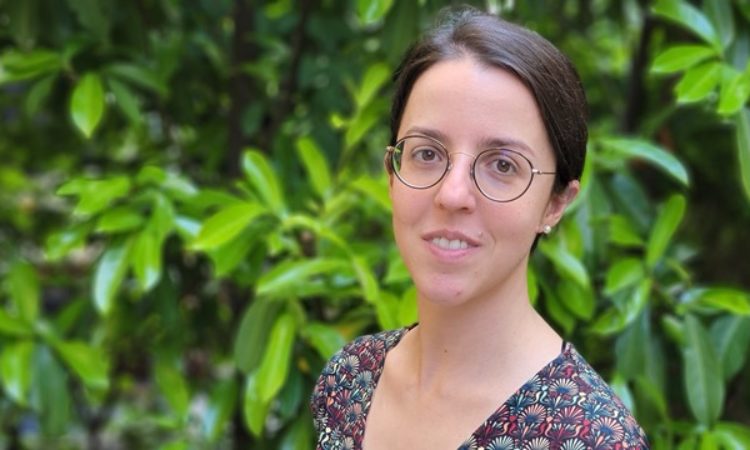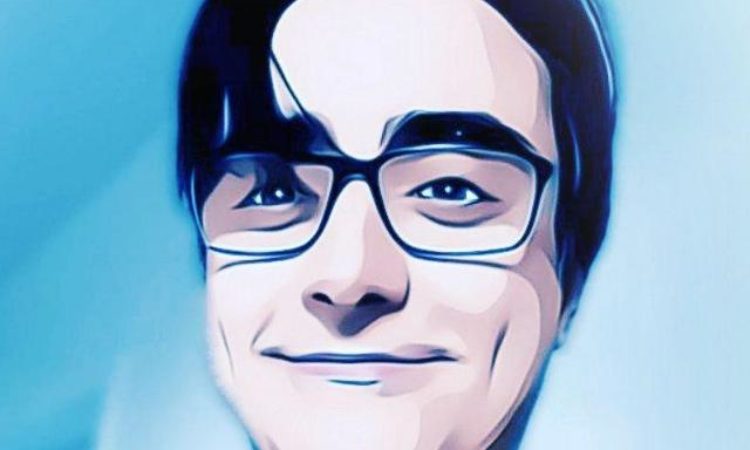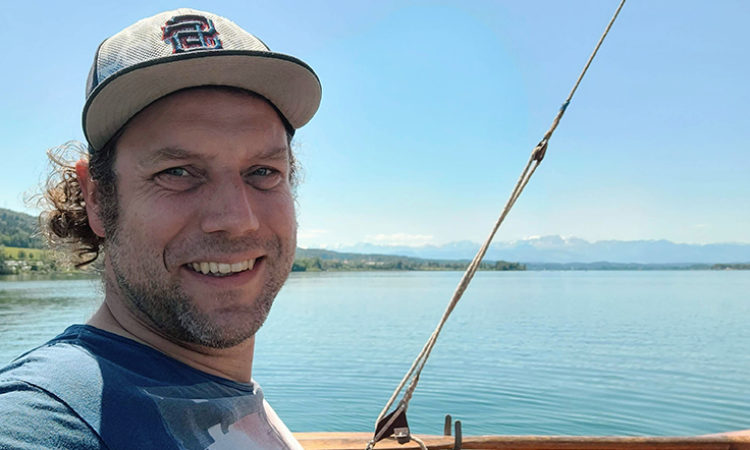Talk with Fabian Natterer, SNSF Professor, UZH
- What have been your main fields of research and your most surprising scientific finding during these last years ?

Broadly speaking, our research deals with the investigation of atomic scale quantum materials using scanning probe microscopy. This includes scanning tunneling microscopy (STM) based electron spin resonance, atomic force microscopy, time-resolved measurements, and quasiparticle interference imaging. The latter, also called QPI or Fourier transform STM, is our most recent focus because it enables insight into the band-structure of quantum materials when complementary techniques may become limited. Such limitations can be caused by strong magnetic and electric fields, ultra-low temperatures or small device geometries. One major bottleneck of QPI measurements with the STM is their long mapping time. This is because STM measurements are inherently slow. The tip of an STM is scanned along the surface and it can only be at one location at a time. For QPI, we require the measurement of the local density of states at every location in a large field of view (hundred thousand to millions of locations), which can occupy an STM for several days. The most surprising finding related to our recent QPI work is that we have been able to introduce a set of techniques that dramatically reduces the required measurement time with little compromise to the obtainable information content. This works so well because many types of data have a known structure, which we exploit to combine sparse sampling with parallel spectroscopy. The former allows us to visit fewer locations with the tip of the STM and the latter enables a faster measurement of the LDOS at every of those fewer locations, speeding up the entire mapping by presently up to three orders of magnitude (x1000). This can be useful if you wanted to receive a quick overview of your sample or if you wanted to investigate your quantum material for a set of external parameters, such as temperature, doping, strain, etc and where you would have had to again invest days for every change of that parameter.
- What is the favorite aspect of your research ?
My favorite aspects are the many plot twists that occur in the course of our research. We typically have a pretty solid plan but have to constantly adapt and learn new things in order to understand what we are doing or how to cope with new circumstances or problems. For instance, at the start of my SNSF professorship, we wanted to commission our microscope for which we had to go through a procurement procedure. Procurement can be an adventure by itself and I was a complete novice in that regard. In our case it lead to several delays and critical moments in which we wondered whether we would be able to proceed at all. However, out of those uncertainties also came our most creative work in recent months that has now become part of our day-to-day activities. Covid-19 is another example that many of us had to adapt to. One of my favorite quotes that I think is capturing this beautifully is from Mike Tyson, who reportedly said: “Everybody has a plan until they get punched in the face“. As an experimentalist, you are permanently exposed to such strikes from an technical side but also from a scientific one. The latter are of course preferred because it could mean that you are on the verge of a discovery that requires your attention in trying to understand it. This ‘struggle’ is hard but it can also be really inspiring and end up leading you to completely new paths that one would not have crossed given the typically narrow focus of one’s research. We are presently taking inspiration from computer science, space observations, and information theory as the more formal fields, and also from more accessible developments found in social media and all corners of the web. This constant change has been a consistent pattern since my early PhD research, which makes it sometimes difficult to exactly place me scientifically but it also lead to several proof of concept experiments that I consider important milestones for the community. What I like about the present work as independent PI is that we can continue this sampling of new approaches also deliberately in our projects for prospective students. Their work will have an original component with a potential to further our research activities and I will again be exposed to something new. It’s a great pleasure to see an idea take shape through the work of your collaborators and being part in the entire process from the conception, first-steps, struggles, to its realization. It also feels great to get funded, so I appreciate the ongoing support of the Swiss National Science Foundation that has backed my activities ever since I started my PhD at EPFL.
- What are your main goals and guidelines for the future ?
My present position comes with a limited contract duration, so my principal goal is to find a permanent position. I have been on limited term contracts ever since my PhD, which can have an inhibiting effect on how one plans ahead, especially if it could impact the career of your collaborators. I also want to consolidate my research activities and ensure the success of my PhD students and collaborators. As a group, I would like us to stay creative and flexible so we are always ready to approach research questions that will arise in the future.
- What are your passions outside the work ?
I have a family with two little kids who are now starting to express themselves, so my passion is to discover who they are and what they are passionate about. Outside of work, I am also extensively reading news pieces from tabloids to NYT to keep an eye out for what is happening in the world.



